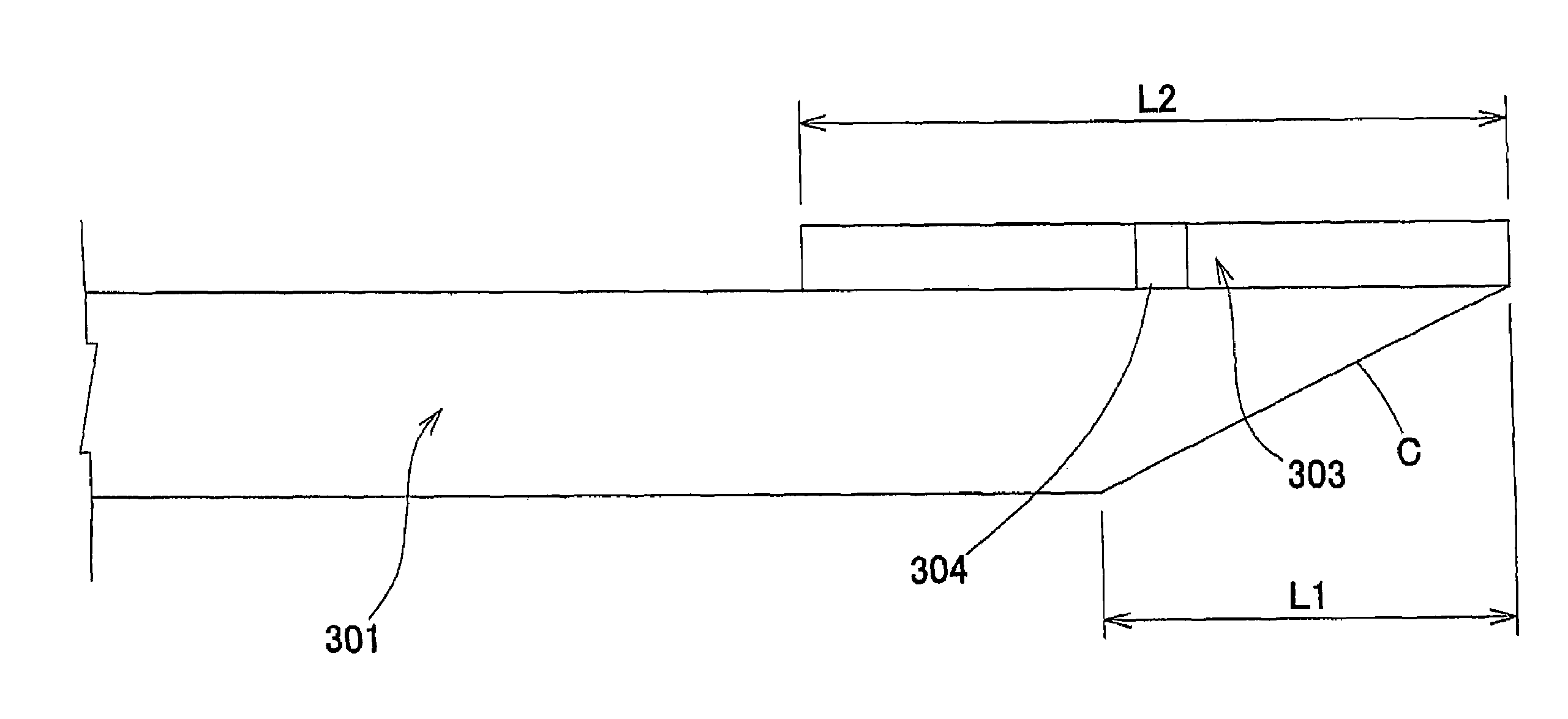Suction catheter
a catheter and suction tube technology, applied in the field of suction catheters, can solve the problems of long recovery time, long recovery time, slow flow or no flow, etc., and achieve the effects of reducing the trackability of the entire catheter, minimizing damage to the inner wall, and high visibility
- Summary
- Abstract
- Description
- Claims
- Application Information
AI Technical Summary
Benefits of technology
Problems solved by technology
Method used
Image
Examples
example 1
[0039]A main shaft was composed of two shafts, i.e., a proximal shaft and a distal shaft. As the proximal shaft, a polyimide tube with an outer diameter of 1.5 mm, an inner diameter of 1.3 mm, and a length of 110 cm was formed by dip forming using a varnish composed of polyamic acid. As the distal shaft, a tube with an outer diameter of 1.5 mm, an inner diameter of 1.2 mm, and a length of 30 cm was formed by extrusion molding using a low-density polyethylene tube (LF480M, Japan Polychem Corporation). The diameter of one end of the proximal shaft was reduced by thermal drawing. The portion in which the diameter was reduced was inserted into the distal shaft and fixed by bonding using a two-part curing urethane adhesive (Nipporan 4235 / Coronate 4403, Nippon Polyurethane Industry Co., Ltd.), and the main shaft was thereby obtained. Since the distal shaft was composed of a material with poor adhesion properties, oxygen plasma treatment was performed before bonding.
[0040]The tip of the ma...
example 2
[0043]A catheter was produced as in Example 1 except that L1 was set at 2 mm and L2 was set at 4 mm.
example 3
[0044]A catheter was produced as in Example 1 except that L1 was set at 2 mm and L2 was set at 7 mm.
PUM
 Login to View More
Login to View More Abstract
Description
Claims
Application Information
 Login to View More
Login to View More - R&D
- Intellectual Property
- Life Sciences
- Materials
- Tech Scout
- Unparalleled Data Quality
- Higher Quality Content
- 60% Fewer Hallucinations
Browse by: Latest US Patents, China's latest patents, Technical Efficacy Thesaurus, Application Domain, Technology Topic, Popular Technical Reports.
© 2025 PatSnap. All rights reserved.Legal|Privacy policy|Modern Slavery Act Transparency Statement|Sitemap|About US| Contact US: help@patsnap.com



